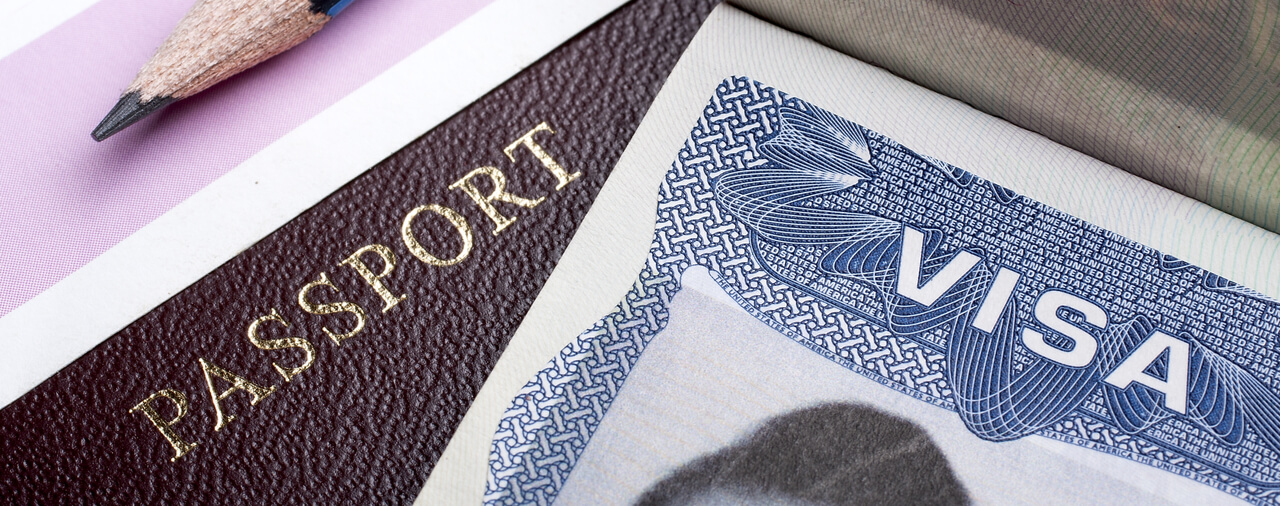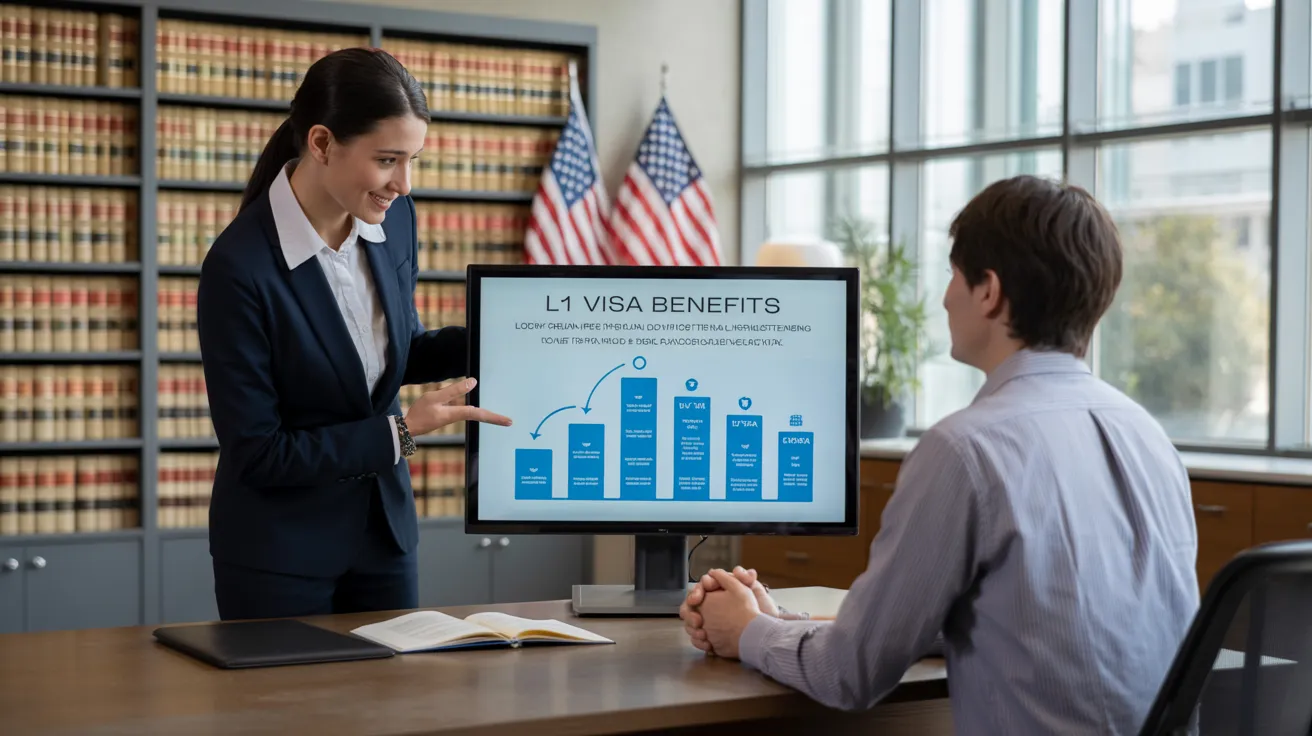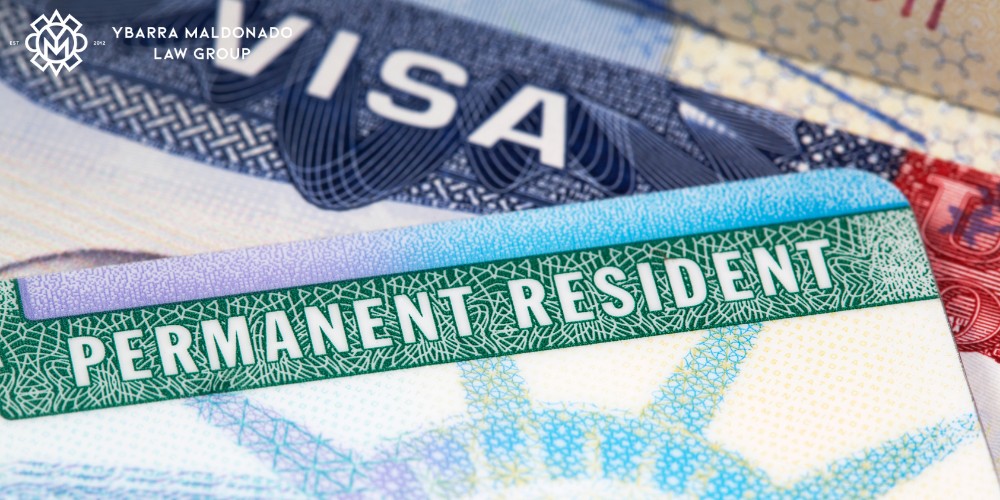Get L1 Visa
Unlocking Opportunities: A Comprehensive Overview to the L1 Visa Process
The L1 visa procedure presents a vital path for international business looking for to transfer crucial staff members throughout borders. Understanding the subtleties of qualification standards, the distinctions between L-1A and L-1B visas, and the ins and outs of the application process can substantially impact a candidate's success. Nevertheless, steering this complex landscape is not without its obstacles, and cautious attention to documentation and company sponsorship is essential. As we explore the essential components of this process, the strategies for overcoming prospective barriers will come to be obvious, revealing just how informed prep work can open a globe of possibilities.
Recognizing the L1 Visa
Recognizing the L1 visa entails recognizing its value as an important tool for international firms seeking to transfer experienced workers in between global offices. This non-immigrant visa category promotes the activity of executives, supervisors, and specialized expertise employees to the United States, thus making it possible for companies to maintain operational connection and harness worldwide skill efficiently. The L1 visa is divided into 2 primary classifications: L-1A for managers and execs, and L-1B for employees having specialized knowledge.The L1 visa serves a critical role in boosting a company's affordable side in the international market - L1 Visa. By permitting business to move their crucial personnel, companies can ensure that crucial projects are managed by certified people that are currently knowledgeable about the firm's society and operational procedures. This interior transfer mechanism not only cultivates knowledge sharing yet additionally advertises advancement and partnership throughout borders.Moreover, the L1 visa is frequently favored for its relatively straightforward application procedure compared to other visa classifications, as it enables dual intent, permitting holders to seek permanent residency while on a momentary copyright. This function makes the L1 visa particularly appealing for both employers and staff members, as it improves the path for skilled specialists to establish lasting residency in the USA
Eligibility Standards
Qualification for the L1 visa depends upon numerous essential requirements that guarantee both the worker and the employer satisfy certain credentials. This non-immigrant visa is developed for multinational companies to transfer staff members from foreign offices to U.S. counterparts.Firstly, the company needs to be a qualifying company, that includes a moms and dad company, branch, associate, or subsidiary of an U.S. organization. The firm must have been doing service for at the very least one year both in the U.S. and abroad. This assures that the company has adequate functional stability and a reputable presence.Secondly, the worker must hold a supervisory, executive, or specialized knowledge placement. For L1A visas, the applicant must demonstrate managerial or executive credentials, while L1B visas concentrate on specialized expertise related to the organization's products, solutions, or procedures. Furthermore, the employee has to have functioned for the international entity for at the very least one continual year within the last 3 years before their application.Lastly, the staff member's role in the united state must straighten with their previous placement, ensuring that their abilities and expertise are leveraged for the company's benefit.
Sorts Of L1 Visas
The L1 visa classification makes up 2 primary kinds designed to assist in the transfer of staff members within international firms: the L1A visa for managers and executives, and the L1B visa for staff members with specialized understanding. Each kind serves distinctive objectives and has certain qualification criteria.The L1A visa is tailored for people who hold supervisory or executive placements within a company. This visa makes it possible for top-level workers to move to a united state branch, subsidiary, or associate of the exact same organization. Applicants for the L1A visa have to show that they have been employed in a supervisory or executive ability for at the very least one constant year within the previous three years before their application. Furthermore, this visa supplies a longer period of stay, originally granted for three years, with the possibility of expansions for approximately 7 years.In contrast, the L1B visa is planned for experts with specialized understanding relevant to the firm's products, services, or processes. To certify, candidates should verify that their proficiency is crucial to the company and that they have actually functioned for at the very least one continuous year within the last three years in a duty that required this specialized expertise. The L1B visa is at first granted for 3 years, with expansions readily available for as much as five years.Both visa types are vital for firms seeking to boost their global procedures by leveraging experienced employees, thus promoting advancement and effectiveness within the united state market.
Application Process
Guiding via the L1 visa process involves a number of crucial actions that have to be meticulously followed to assure a successful outcome. The procedure starts with the U.S. employer, who should initially establish eligibility by demonstrating a certifying partnership with the foreign entity and confirming that the staff member meets the details needs for the L1 visa category being sought.Once eligibility is verified, the company initiates the procedure by submitting Form I-129, the Request for a Nonimmigrant Worker, with the U.S. Citizenship and Immigration Provider (USCIS) This form must be come with by an in-depth summary of the job tasks to be performed, the organizational structure of both the U.S. and international entities, and the worker's credentials. It's important to confirm that all info is exact and full, as noninclusions or inaccuracies can cause hold-ups or denials.Upon authorization of the I-129 request, the following action entails the employee making an application for the L1 visa at a united state embassy or consulate in their home nation. This stage requires the completion of Type DS-160, the Online Nonimmigrant Visa, and setting up an interview. During the interview, the candidate has to present proof sustaining their certifications and the employer's petition.After the visa is granted, the staff member can go into the United States to function in the assigned role. Generally, mindful prep work and adherence per step of the application process are essential for an effective L1 visa result.
Needed Paperwork

Crucial Forms Needed
Steering the L1 Visa procedure needs mindful attention to the crucial forms and documentation required for an effective application. The main form required is the Type I-129, Petition for a Nonimmigrant Employee, which need to be finished and sent by the U.S. employer. This form describes the details of the employment offer and the credentials of the staff member seeking the L1 Visa.Alongside Form I-129, the applicant will need to total Type I-539 if coming with member of the family are also getting visas. In addition, the employer must offer evidence of the certifying relationship between the united state entity and the international entity, frequently requiring the entry of corporate records such as articles of incorporation or financial statements.Moreover, it is important to consist of the L Classification Supplement to Form I-129, which defines the kind of L Visa being asked for-- either L-1A for managers and execs or L-1B for staff members with specialized expertise. Ultimately, candidates should assure that all kinds are authorized and dated appropriately, as insufficient entries can lead to hold-ups or rejections. Appropriately putting together these vital forms lays the structure for a smoother L1 Visa process.

Supporting Proof Demands
Sustaining documents is crucial for a successful L1 Visa, as it validates the claims made in the request. Applicants have to supply a series of papers to show eligibility for the visa, which is categorized into 2 key kinds: evidence of the certifying connection between the united state and foreign entities and evidence of the applicant's qualifications.To establish the connection, applicants need to send documentation such as company organizational graphes, financial declarations, and proof of possession. These documents confirm that the foreign company has a certifying partnership with the U.S. employer, whether as a parent firm, subsidiary, branch, or affiliate.For the applicant's certifications, important files consist of a detailed employment letter from the international employer, laying out the candidate's job title, responsibilities, and period of employment. In addition, instructional qualifications, such as degrees and diplomas, should be provided to confirm the candidate's competence in the pertinent area.
Company Sponsorship Documents

Common Difficulties
Steering the L1 visa procedure presents a number of common difficulties that candidates must be aware of. Secret concerns frequently consist of strict documents needs, potential hold-ups in handling times, and the requirement for rigorous lawful compliance. Comprehending these barriers can aid candidates much better prepare and minimize threats during their visa journey.
Documentation Demands
The L1 visa process commonly provides considerable difficulties associated with paperwork needs. Candidates need to supply substantial paperwork to develop qualification, which can cause confusion and possible hold-ups. Key papers consist of proof of a certifying connection in between the U.S. and international company, evidence of the applicant's employment history, and detailed details concerning the task role in the U.S.One typical challenge is collecting adequate proof to demonstrate the nature of the qualifying relationship. Companies commonly battle to present clear organizational graphes or monetary declarations that show the connection in between the entities. Furthermore, guaranteeing that letters of assistance from employers accurately mirror the candidate's job responsibilities and certifications is essential, as unclear summaries can result in denials.Another concern arises from the requirement for comprehensive job descriptions that align with the L1 visa classifications. Candidates need to express not only their existing function but additionally their managerial or customized expertise duties clearly. This requires a thorough understanding of both the applicant's placement and the regulative language used in L1 visa.
Handling Dead Time
Experiencing delays in handling times is a common challenge encountered by L1 visa candidates, commonly leading to aggravation and uncertainty. Several elements contribute to these hold-ups, consisting of high application volumes, enhanced analysis of applications, and administrative backlogs within the U.S. Citizenship and Immigration Services (USCIS) Applicants may discover that handling times can vary significantly relying on the solution center handling their application, as each center has its very own workload and L1 Visa effectiveness degrees. Furthermore, the intricacy of the candidate's case, such as the requirement for extensive documents or information, can better extend wait times.In some instances, problems associated with the applicant's existing immigration standing or previous visa history may additionally lead to additional hold-ups, as USCIS may require further review or information. It is essential for candidates to remain proactive throughout this duration, preserving open communication with their employers and lawful reps to resolve any kind of possible worries promptly.Understanding these handling time challenges can assist L1 visa candidates prepare for feasible hold-ups and reduce the effect on their shift and profession plans. Patience and persistance are vital merits in maneuvering this detailed procedure.
Legal Compliance Issues
Lots of L1 visa candidates run into lawful conformity problems that can complicate their journey towards acquiring the visa. Understanding and adhering to the specific regulations established by the U.S. Citizenship and Migration Services (USCIS) is vital. Usual difficulties consist of demonstrating the qualifying relationship between the foreign and U.S. companies, along with confirming that the candidate possesses the requisite customized understanding or supervisory capacity.Additionally, applicants should provide extensive documentation describing their job responsibilities, business structure, and economic stability of the united state entity. Insufficient or unreliable documentation can cause hold-ups or perhaps rejections. Employers have to likewise ensure that they conform with labor regulations, consisting of wage and functioning problem standards, which can influence visa eligibility.Another usual concern involves maintaining compliance with the regards to the visa as soon as approved. Modifications in work status, job duties, or company framework can require changes to the visa, which otherwise attended to immediately can bring about legal issues. Because of this, staying informed regarding conformity requirements and looking for lawful counsel when required is important to navigate the intricacies of the L1 visa procedure efficiently.
Tips for Success
Success in the L1 visa procedure usually rests on meticulous preparation and interest to information. To enhance your opportunities of approval, begin by extensively recognizing the qualification requirements for both the L1A and L1B visa categories. Assess whether your placement at the firm qualifies as managerial, executive, or specialized understanding, as this classification especially impacts your application.Next, gather extensive documentation that substantiates your insurance claims. This includes business charts, comprehensive task descriptions, and evidence of the firm's functional structure. Clear and concise proof of the certifying relationship between the U.S. entity and the foreign entity is important. Confirm that all files are organized rationally and offered in a specialist fashion, as this mirrors your commitment and severity concerning the application.Engage the solutions of an experienced immigration attorney that focuses on L1 visas. Their expertise can prove invaluable, directing you with complicated guidelines and guaranteeing that all paperwork follows current laws. In addition, plan for the meeting by practicing response to common inquiries and preparing to discuss your function and payments to the company detailed.
Regularly Asked Concerns
Can Family Members Accompany the L1 Visa Owner?
Yes, member of the family of L1 visa holders, consisting of spouses and single kids under 21, can come with the primary visa holder. They might also look for L2 visas, which allow them to reside in the United States.
How Long Can I Remain On an L1 Visa?
The L1 visa enables initial keeps of up to three years, with the possibility of extension. L1A visa owners might stay for a maximum of 7 years, while L1B visa holders can continue to be for five years.
Can L1 Visa Owners Get a Permit?
Yes, L1 visa owners can look for a permit. L1 Visa. They might seek irreversible residency through employment-based classifications, normally calling for sponsorship from their company, given they satisfy the essential certifications and documentation requirements
What Takes place if My L1 Visa Is Denied?
If your L1 visa is refuted, you might get a notification detailing the factors for denial. You can seek to appeal the decision, reapply, or discover alternative visa alternatives based on your circumstances.
Exist Any Kind Of Traveling Restrictions With an L1 Visa?
An L1 visa typically enables worldwide travel; nevertheless, re-entry to the U. L1 Visa Requirements.S. rests upon maintaining valid status. Travelers ought to guarantee conformity with visa conditions to stay clear of difficulties upon return
Conclusion
